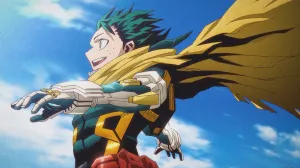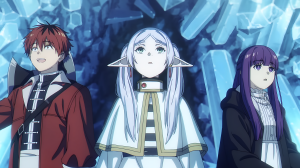If you watched the historic SpaceX launch over the weekend and thought the suits astronauts Doug Hurley and Bob Behnken were wearinglooked very cinematic, you’re not alone – and for a very good reason, at that. The designer behind the suits, Jose Fernandez, is part of the collaborative effort that is Ironhead Studios, one of Hollywood’s leading special effects firm for the movie industry. Within the past few years, Fernandez and Ironhead have been responsible for designing and outfitting heroes in movies like Batman v Superman, Captain America: Civil War, TRON, and The Amazing Spider-Man.
Videos by ComicBook.com
The process first began in 2016 when the Elon Musk-founded SpaceX approached Fernandez and asked him to participate in a design competition for the custom-made suits. As it turns out, Fernandez’s helmet design is the piece of the suit that sealed the deal for the relationship.
“He (Musk) kept saying, ‘Anyone looks better in a tux, no matter what size or shape they are,’ and when people put this space suit on, he wants them to look better than they did without it, like a tux. You look heroic in it,” Fernandez tells Forbes.
The designer is no stranger to making iconic helmet pieces either – Fernandez was the one who came up with the designs for both Loki (Tom Hiddleston) and Thor’s (Chris Hemsworth) helmets in the Marvel Cinematic Universe, plus the cowl design Ben Affleck’s Bruce Wayne wore in Batman v Superman.
The studio’s work doesn’t stop there – other credits they have on tap include Alice in Wonderland, Batman Returns, Battleship, Daredevil, Fantastic Four, Godzilla, Planet of the Apes, Transformers, Watchmen, and X-Men. Oh, and they designed the costumes Daft Punk wears in public on top of everything else.
It’s unclear just how long Hurley and Behnken will remain at the International Space Station as mission controllers at NASA have yet to determine the length of the mission. At the earliest, they’ll return to Earth at the end of this month; conversely, they could be aboard the ISS for another four months.
“Really the decision point is, ‘Hey, is Dragon healthy? Is the vehicle performing well, the Dragon that’s on orbit?’” NASA Commercial Crew Program deputy director Steve Stich said at a recent mission briefing. “And then we’ll be looking ahead to that next mission, the Crew-1 flight, and looking at the vehicle readiness and trying to determine what’s the smart thing to do relative to the mission duration.”
Cover photo by Joe Raedle/Getty Images








